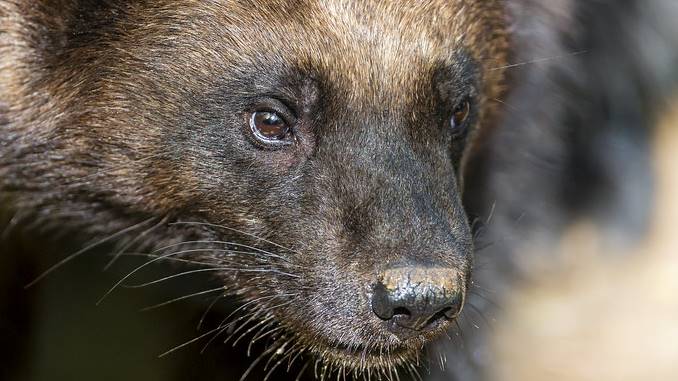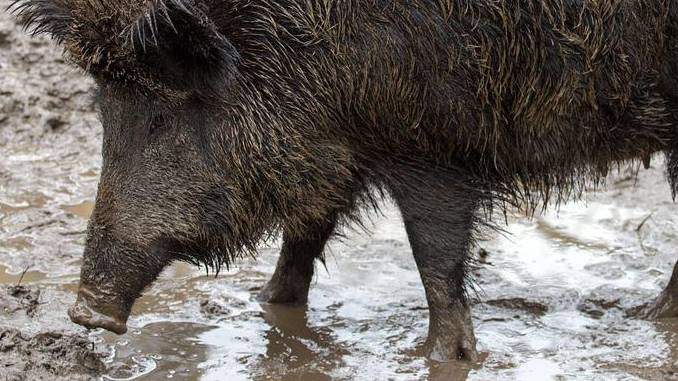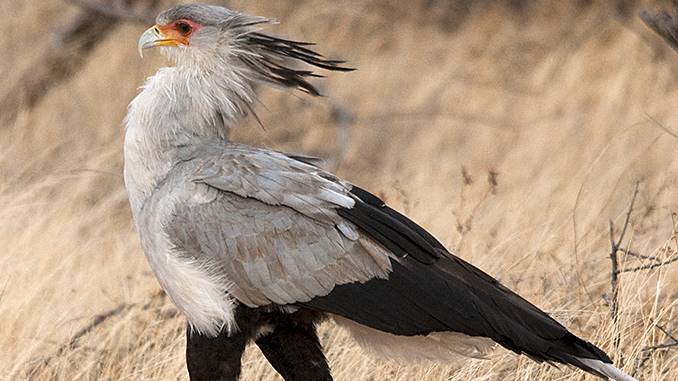Disclaimer: The information presented below is for general informational & educational purposes only. Always consult with animal professionals in case of specific concerns.
You’re fully aware of the dangers that snakes can pose.
Have you ever considered the risks that these animals may face? Nature maintains equilibrium by supplying hunters with predators.
Most people are terrified of these squirming reptiles, which prey on rats, insects, and eggs. It’s difficult to believe that even those snake varieties are also afraid of someone or something.
So, what eats snakes?
Natural predators of this species include wolverines, honey badgers, wild boars, and various others. If you want to discover more, it’s time to dive into this article.
Let’s scroll down.
What Eats Snakes?
#1. Wolverines

Though wolverines are the last predators on the food chain, they still be a danger for human and other animals. This monster will hunt and kill everything it runs across. Also, it is non-discriminatory and brutal.
Their diet includes rodents, worms, rabbits, mice, birds, frogs, and snakes. Cobras have been known to be taken out by wolverines.
Despite their diminutive size, the wolverines are a massive member of the weasel family. These animals are formidable scavengers and predators with a wide range of abilities.
This species is a robust and stocky, and solitary species. They climb and spend much time catching birds in forests. On the other hand, they are not creatures that stay in one place.
In search of food, the predators travel 15 miles every day. These animals dig tunnels only to capture other hibernating species.
#2. Honey Badgers
Honey badgers follow snakes because they are immune to being bitten by a King Cobra.
The honey badgers maintain a watch on the thick bushes, bushes, and caves for creatures on their food supply chain. That’s because they consider those things high-yield feasts.
The hunting badgers consume over half of their total diet of snakes throughout the hotter months of every year, whenever snakes are much more active.
The poisonous puff adders are also prey. The immunity of the honey badger has eluded science.
These animals once fainted out after consuming the head of a puff adder. Two hours later, it struggled away from a drowsy snooze.
Read more: Are Badgers Dangerous to Humans, Dogs, And Cats?
#3. Wild Boars

The wild boars are one of the animals with big noses that can measure around 100 kg and live for more than 20 years.
They eat a variety of things, even including snakes, but primarily seeds, young plants, and tubers.
Female wild boars can begin breeding at the age of eighteen months. It may produce 4 or 6 piglets per year.
Many factors affecting their population development include:
- Their rapid reproduction rates.
- The abundance of excellent feeding environments.
- The absence of natural predators.
#4. Scottish Terriers
Snakes are not natural prey for any canine species. They are, nevertheless, intrigued.
Other dogs will cheerfully dash after a cat, squirrel, or vehicle, and these dogs will do the same.
A Scottish Terrier is a hunting and killing dog. Airedales and Rat Terriers are examples of dogs in this family.
This dog breed is an outgoing, self-assured friend. They have a piercing gaze that indicates acute awareness and upright ears that show alertness.
They are professional-looking working dogs. If you see any snake eggs of snakes around your property, these watchdogs will help.
#5. Mongooses
Against most deadly snakes, the mongoose possesses remarkable resistance.
Some researchers claim that these hunters have specific acetylcholine receptors that make them resistant to a range of venoms.
Some argue that these animals have just a rudimentary resistance to poison but can evade a deadly strike by outwitting the bite using ninja reflexes.
These creatures are well-known for their capacity to kill venomous snakes such as cobras.
Because of their quickness and thick coats, these creatures have a better chance of fighting snakes.
They use a balletic approach, feinting and darting quickly to force the prey to bite again. When the opportunity arises, they bite the snake’s head.
#6. Kingsnakes
Surprisingly, the kingsnake is an ordinary domestic pet. The animals come from the Colubridae family and feature a brightly colored tri-hued pattern.
The kingsnake attacks a relative and eats it through constriction. This species nearly appears like a bloodthirsty deed.
Nevertheless, in the snake community, such behavior is not unusual.
It’s supposed that this animal’s delighted capacity to reign over the snake kingdom. A Kingsnake gleefully consumes its species to gain emperor status, whether in the forest or the desert.
#7. King Cobras
The king cobra is the world’s longest venomous snake, and it lives in the jungle. Some of them can reach a terrifying 18-foot span.
Ophiophagus hannah is the scientific name for this species, which means “snake eater” in Latin. Other snakes are a staple of these creatures’ diets.
Although these hunters will devour giant lizards and other cold-blooded animals, they are primarily concerned with keeping snakes alive in the food supply chain.
King cobras are always on the lookout for other cobras to eat. The king cobra possesses a sensitive nose, despite its deafness.
The cobra remains on the lookout for this target. When it detects a scent, it goes on pursuit.
Interestingly, certain king cobras spend their whole life eating only one variety of snakes.
Related: Do Cobras Make Good Pets?
#8. Snake Eagles
The snake eagles cause nightmares in snakes. These aggressive birds can decapitate and consume an adult one even in flight.
This species is smaller than adult eagles, yet they create a massive impression while soaring.
Rodents, fish, bats, and lizards are some of their favorite prey. When they see the target, they dive and seize the reptile with their talons.
A covering of scales provides considerable protection to the snake eagle’s legs. Poisons won’t work because of the thick coat.
This feature is beneficial for this species when hunting cobras and black mambas in the rainforest.
#9. Secretary Birds
Among birds with long legs, the secretary bird species is a real kicker. This predator has five times its body weight in force, enough to dispatch a giant, dangerous snake in a single glance.
The legs of secretary birds are crane-like, so they stand nearly four feet in height. Unlike other birds, these predators hunt on foot, seeking food in the air.
The secretary birds also differ from many other bird predators in that rather than attacking the victim with their talons or beak; they stomp on it.
Efficiency and quickness are two factors that venomous snakes employ to their benefit. Unfortunately, this bird species can rival it, hitting a precise death blow towards the snake’s head.

#10. Bobcat
These animals are territorial and lonely cats that use their smell to mark their borders and keep away other cats.
People rarely see the bobcat. At night, bobcats prowl the area, avoiding humans. They hibernate in caves, thickets, fens, and hollow trees.
Whenever chance appears, a bobcat will prey on smaller creatures such as rabbits, eggs, snakes, lizards, and rodents.
On the other hand, the bobcat enjoys a challenge, hunting poisonous snakes and white-tailed deer in the deserts.
This species is a natural opportunist who consumes anything that moves and that they can capture.
#11. Hedgehogs
Hedgehogs can make really good pets as they can live only on tiny insects in some species. Herbivores, carnivores, and insectivores all coexist in other hedgehogs.
They devour anything and stay full for an extended period. However, these creatures have been reported to go a long time without eating.
Hedgehogs are immune to several poisons, one of their distinctive and unique properties.
This feature allows these animals to eat a group of deadly species in the food chain without suffering any consequences. Young snakes, scorpions, beetles, spiders, frogs, and bees are among them.
#12. Alligators
Alligators are scavengers who eat whatever they can get their hands on. Prey animals that are plentiful and readily available are part of their diet.
According to some studies, Alligator blood possesses qualities that could help them survive deadly snake attacks.
Insects, small fish, invertebrates, and amphibians are the primary prey of juvenile ones. Rough fish, turtles, and snakes are among the food sources for adults.
If you want to know how an alligator fights with a snake, watch this video:
#13. Kookaburras
The kookaburras are relatively stout birds with medium-length tails and broad beaks.
They are famous for their charismatic vocalizations. That’s why they also have another name – laughing kookaburras.
These animals may eat various species such as insects, amphibians, small mammals, or reptiles.
It is reported that kookaburras can kill a snake around three feet in length.
#14. Cormorants
Cormorants are a group of birds that reside near the coasts of oceans and lakes worldwide but in the central Pacific islands.
Cormorants are medium-sized birds that can grow to reach up to 40 inches long.
All cormorants eat fish and other sea life. Eels and fish make up most of their diet, although some cormorants may also eat snakes.
What Scares Snakes?
Snakes are scared of many predators in nature, including wolverines, honey badgers, wild boars, Scottish terriers, mongooses, cormorants, and many others.
If you see a snake in your garden or backyard, you can use some methods to scare it off. Below are some natural snake repellent products to consider:
- Naphthalene
- Sulfur
- Cinnamon and Clove oil
- Onions and garlic
- Ammonia
- Vinegar
- Lime
FAQ’s
What Eats Snakes In The Rainforest?
What eats snakes in the rainforest? Snakes are the primary or only dietary source of some species like eagles and hawks.
What Eats Snakes In The Desert?
What eats snakes in the desert? Some animals may eat snakes, such as coyotes, honey badgers, mongooses, bobcats, owls, or foxes.
What Eats Snakes In The Sea?
Snakes also have predators in the sea like sharks, birds, or big bony fishes despite being venomous.
What Eats Cobra Snakes?
The mongoose is the king cobra’s primary predator since it is impervious to its poison. Also, Mongooses hardly attack and kill king cobras if forced to do that.
The Bottom Line
Via this post, have you got the answer to the question: What eats snakes?
Although these animals are among poisonous species, they still have hunters and predators even in the rainforest or the desert.

Hi, my name is John, and I’m an animal lover. I’ve been fascinated with the animal kingdom since I was 5 years old, and my passion keeps growing bigger as I age. And this blog is where I share my researches and passion with animal lovers all around the world.
